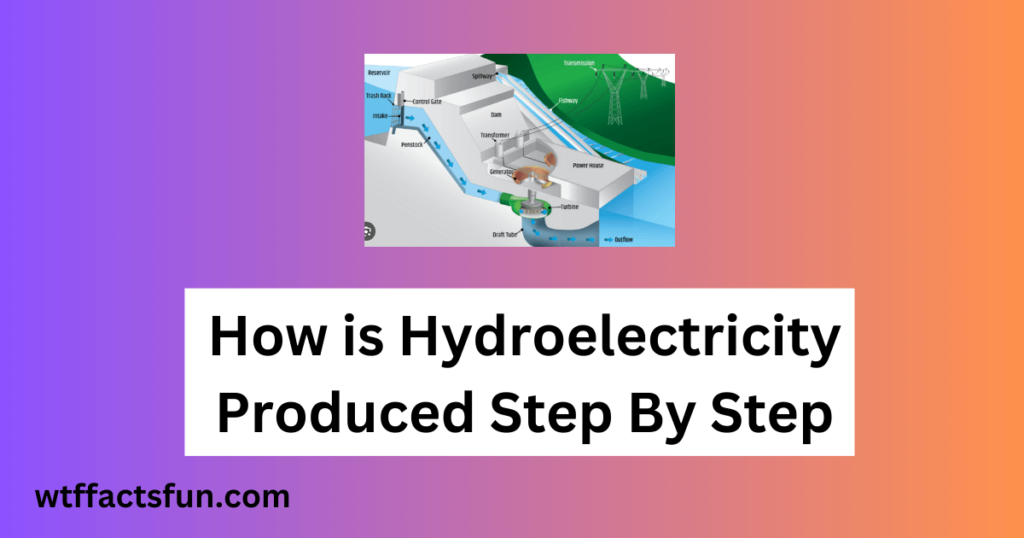
How is Hydroelectricity Produced Step By Step
How is Hydroelectricity Produced Step By Step: Hydroelectricity, derived from the energy of flowing water, stands as one of the oldest and most reliable renewable energy sources. This eco-friendly technology has been harnessed for centuries to generate electricity on a large scale. In this comprehensive guide, we will explore the step-by-step process of hydroelectricity production, from the initial water source to the delivery of electricity to end-users.
- Identification of Suitable Sites: The first crucial step in hydroelectricity production is identifying locations with abundant water resources and elevation differences. Ideal sites often feature rivers or streams with a consistent flow and a significant drop in elevation, creating the potential for efficient energy conversion.
- Construction of Dams: Once a suitable site is identified, a dam is constructed across the river or stream to create a reservoir. The dam serves multiple purposes, including regulating water flow, creating a height differential, and storing water for consistent energy generation.
- Reservoir Formation: The dammed river creates a reservoir, a large water body that stores potential energy. As water accumulates behind the dam, it gains gravitational potential energy due to the elevated position. The height of the dam determines the potential energy available for conversion into electricity.
- Penstock Installation: A penstock, a large pipe or conduit, is installed to channel water from the reservoir to the turbines. The penstock’s design considers factors such as pressure, flow rate, and efficiency to maximize energy extraction from the moving water.
- Turbine Operation: Water from the reservoir is directed through the penstock to strike the blades of a turbine. The force of the flowing water causes the turbine to spin, converting the kinetic energy of water into mechanical energy.
- Generator Conversion: The rotating turbine shaft is connected to a generator, which consists of coils and magnets. As the turbine spins, it induces a magnetic field in the generator, resulting in the conversion of mechanical energy into electrical energy through the process of electromagnetic induction.
- Transmission of Electricity: The electricity generated by the hydroelectric plant is sent to a transformer to increase voltage for efficient long-distance transmission. High-voltage transmission lines then carry the electricity to distribution points and eventually to homes, businesses, and industries.
- Environmental Considerations: Hydroelectricity is considered a clean energy source, but it is not without environmental impact. The construction of dams and reservoirs can alter ecosystems, affecting local flora and fauna. Modern hydroelectric projects often incorporate measures to mitigate these effects, such as fish ladders to assist fish migration and environmental impact assessments.
- Maintenance and Monitoring: Regular maintenance of hydroelectric facilities is crucial for their efficient and safe operation. Ongoing monitoring ensures that the infrastructure remains in optimal condition, and any necessary repairs or upgrades can be implemented promptly to prevent disruptions in energy production.
- Integration with Other Energy Sources: Hydroelectricity can be part of an integrated energy strategy, complementing other renewable sources such as solar and wind power. Combining different renewable energy technologies helps create a more reliable and resilient power grid.
Conclusion:
Hydroelectricity production, with its rich history and proven efficacy, stands as a cornerstone of renewable energy. The step-by-step process, from identifying suitable sites to transmitting electricity to end-users, underscores the intricate engineering and environmental considerations involved in harnessing the power of flowing water. As technology advances and sustainability becomes increasingly important, hydroelectricity remains a key player in the global effort to transition towards cleaner and more sustainable energy solutions.
Read also: